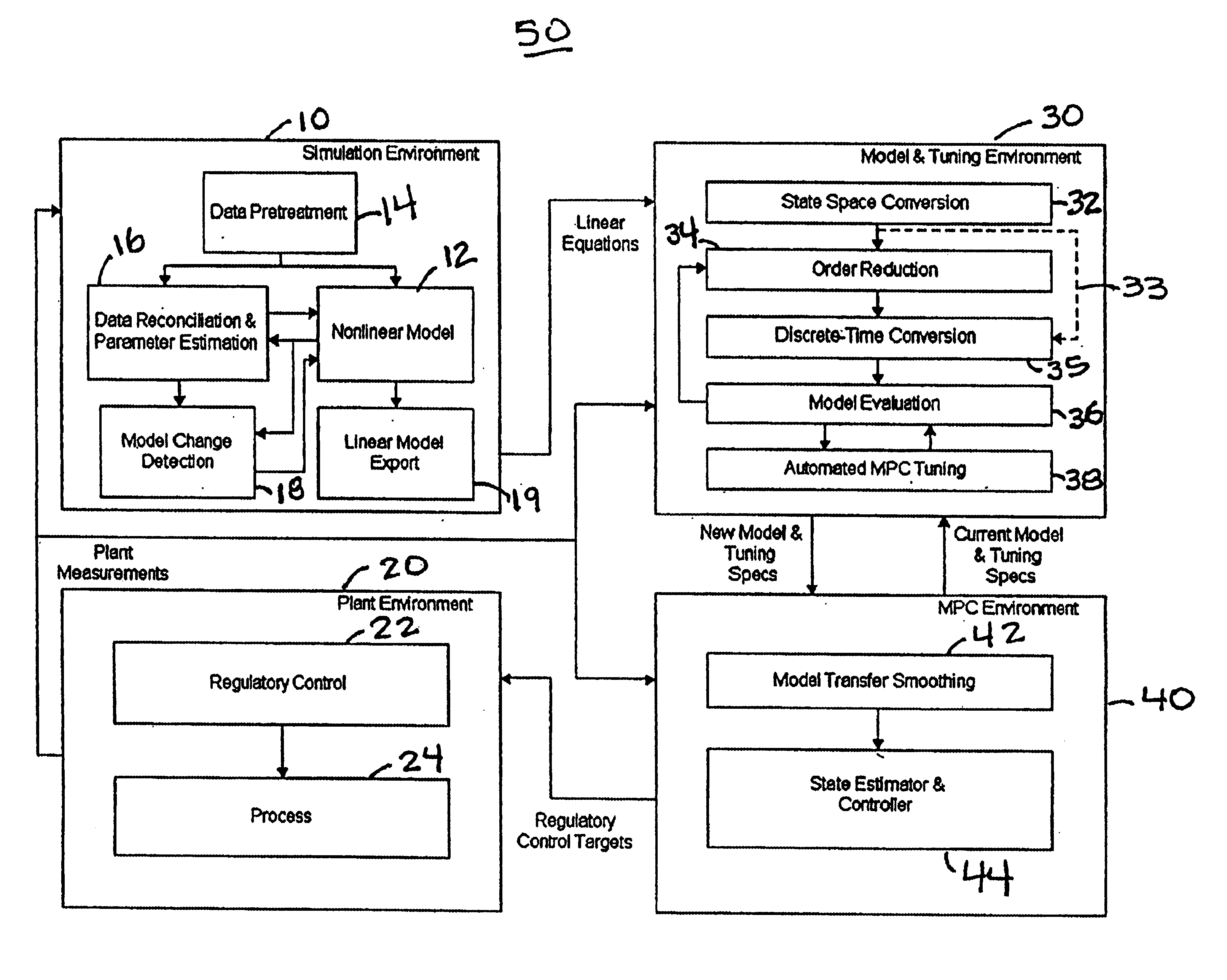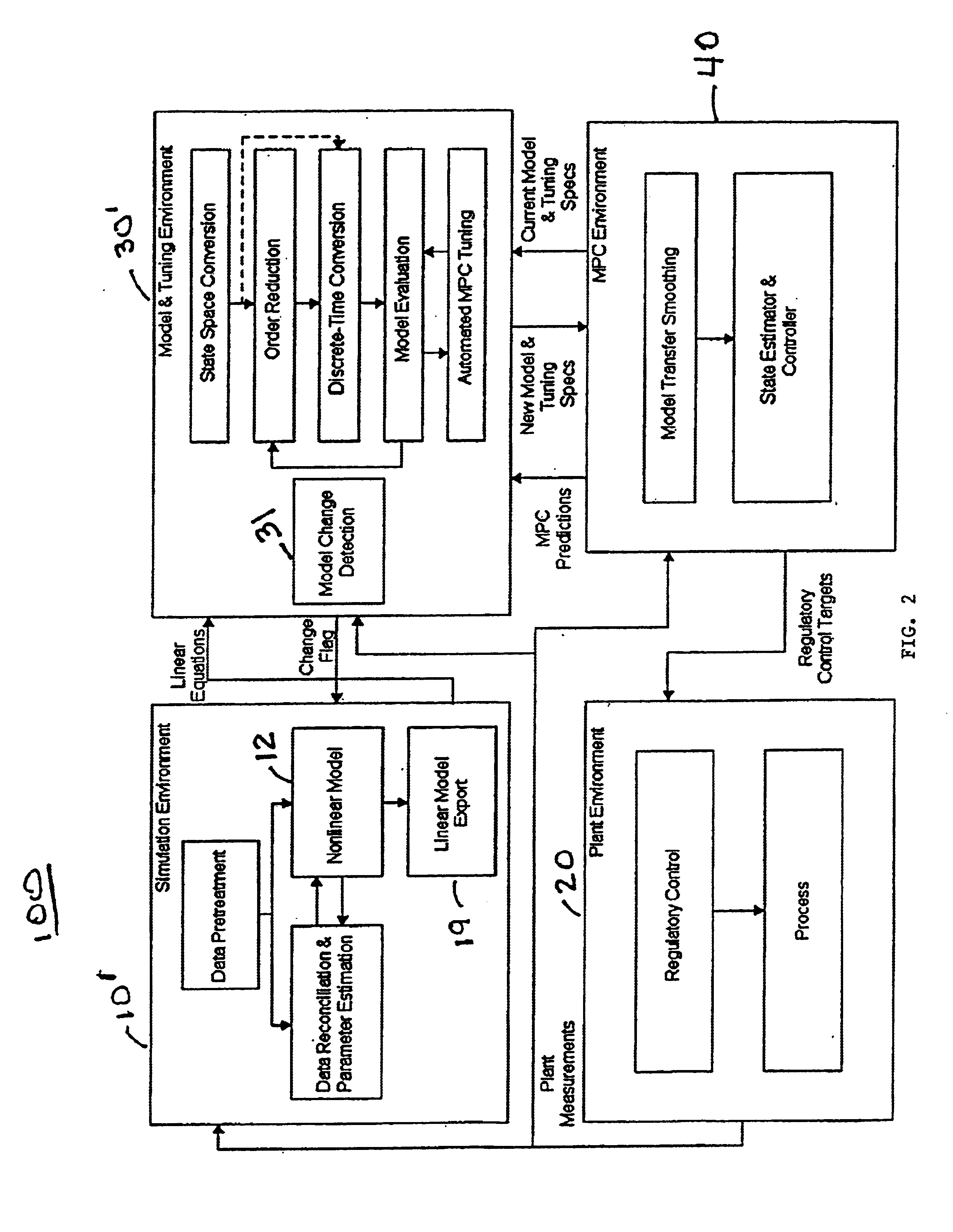System and methodology and adaptive, linear model predictive control based on rigorous, nonlinear process model
a process model and linear model technology, applied in the field of system and methodology and adaptive, linear model predictive control based on rigorous, nonlinear process model, can solve the problems of unstable operation, difficult logic development, and difficult control of these processes using traditional multivariable control techniques with fixed model representations
- Summary
- Abstract
- Description
- Claims
- Application Information
AI Technical Summary
Problems solved by technology
Method used
Image
Examples
Embodiment Construction
)
The embodiment of the complete computer software system 50 shown in FIG. 1 includes a number of different components operating in multiple environments. These multiple environments include a Simulation Environment 10, which receives inputs from a Plant Environment 20; and a Model and Tuning Environment 30 which receives inputs from the Simulation and Plant Environments 10, 20 and from a MPC Environment 40. The MPC Environment 40 receives inputs from the Model and Tuning Environment 30 and from the Plant Environment 20 and provides outputs to the Plant Environment 20 and to the Model and Tuning Environment 30.
The Plant Environment 20 includes regulatory control 22 to control the operation of process 24. As is well known regulatory control 22 typically comprises a process automation system that includes associated instrumentation such as sensors for measuring temperature, pressure and flow; and analyzers.
Each of the environments 10, 30 and 40 include the following multiple software c...
PUM
 Login to View More
Login to View More Abstract
Description
Claims
Application Information
 Login to View More
Login to View More - R&D
- Intellectual Property
- Life Sciences
- Materials
- Tech Scout
- Unparalleled Data Quality
- Higher Quality Content
- 60% Fewer Hallucinations
Browse by: Latest US Patents, China's latest patents, Technical Efficacy Thesaurus, Application Domain, Technology Topic, Popular Technical Reports.
© 2025 PatSnap. All rights reserved.Legal|Privacy policy|Modern Slavery Act Transparency Statement|Sitemap|About US| Contact US: help@patsnap.com



